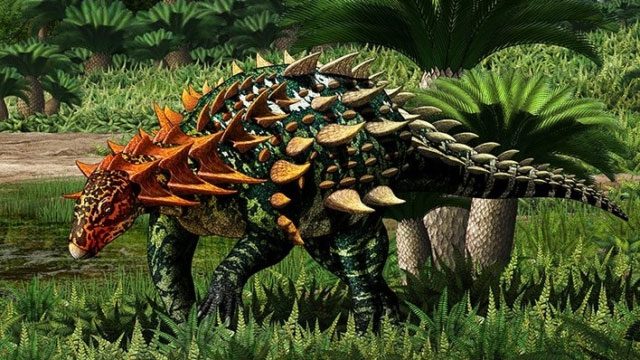Fossils in Yunnan, China Reveal a Newly Described Armored Dinosaur That Lived 179 to 192 Million Years Ago.

Reconstruction of the armored dinosaur Yuxisaurus kopchicki. (Photo: Yu Chen)
In a paper published in the journal eLife on March 15, a research team led by Professor Paul Barrett at the Natural History Museum (NHM) in London named the new species Yuxisaurus kopchicki. Its fossils are remarkably complete, including skull fragments, vertebrae, parts of limbs, and numerous armored scales. This specimen is the oldest and best-preserved example of the group of Armored Dinosaurs (Thyreophoroidea) found in Asia.
Thyreophoroidea are easily recognizable, characterized by rows of armor running along their bodies. The two most famous subgroups of this class are the Ankylosaurus and Stegosaurus, along with several lesser-known groups.
“The armor of Yuxisaurus kopchicki immediately indicates that it is a member of the Armored Dinosaur group, alongside Ankylosaurus and Stegosaurus. However, the age of the fossils suggests it is an early member, predating the two subgroups mentioned,” Paul wrote in the report. “My colleagues in China found this specimen in Yunnan, in rock layers dated to 179 – 192 million years ago. Evolutionary analysis shows it shares many characteristics with the common ancestor of both Ankylosaurus and Stegosaurus.”
Historically, Thyreophoroidea fossils have mostly been found in rocks dated to the Late Jurassic and Cretaceous periods, approximately 66 – 163 million years ago, in North America and Europe. This new discovery confirms that the early armored dinosaurs lived in Asia much earlier than previously thought.
“We know very little about the early history of herbivorous dinosaurs in China, so regionally, this is a truly significant discovery,” Paul added.





















































